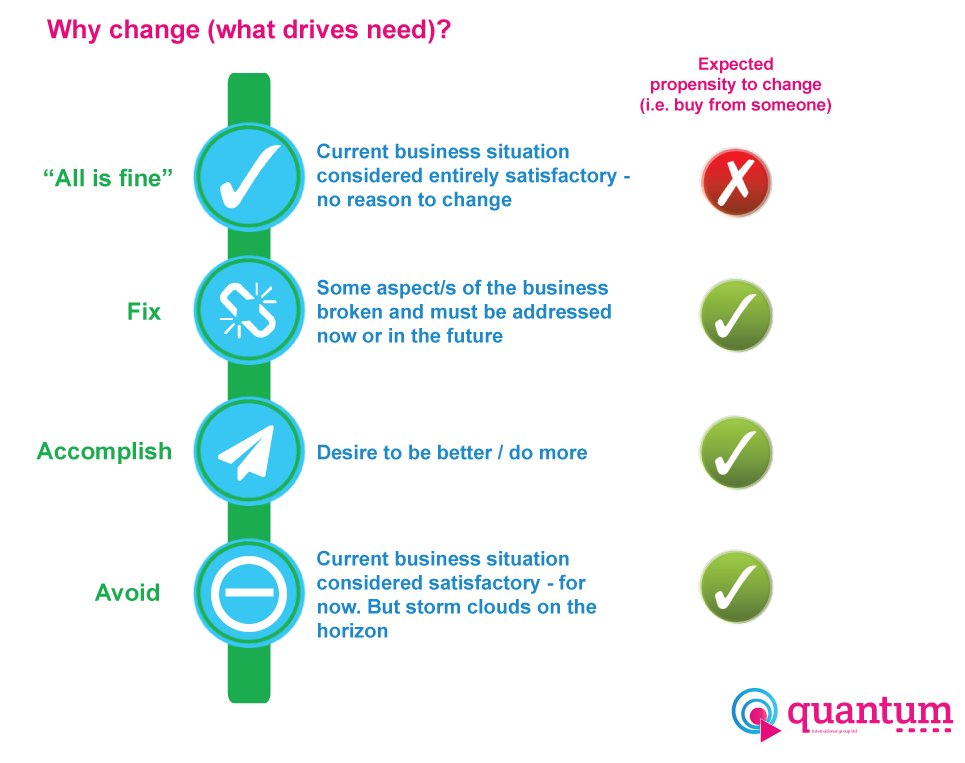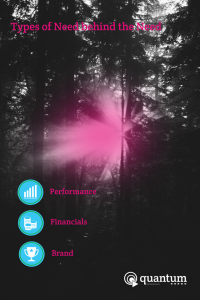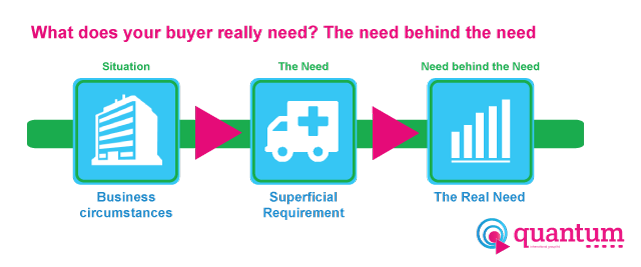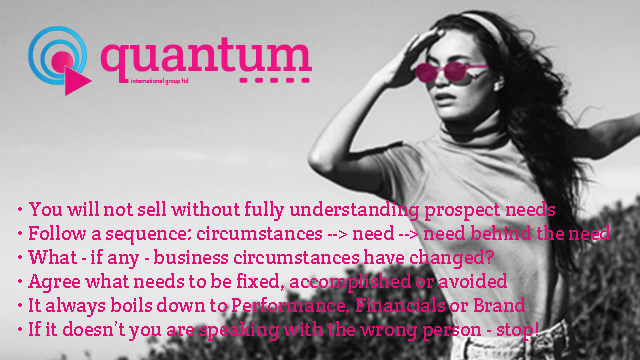Most people now “get” consultative selling – the idea that a sales person absolutely must not start jabbering away about how great their product is before the customer has been given a fair chance to talk about their issues and needs.
But how do we get to the true essence of our prospect’s need?
And is there a repeatable approach to discovering need that we can effectively use in all sales situations to improve our sales performance?
We might even get some clues as to how important the buying influence we are speaking with is to the ultimate purchasing decision depending on the way that need is articulated.
(The answer to these questions – if you have not guessed already – is a resounding “yes”!).
What drives business need?
It’s very rare that people buy something just because they have money burning a big fat hole in their pocket.Buyers buy from sales organisations because they have a real or perceived need to do something different and make a change to the way they operate their company.Yet most humans intrinsically seek to avoid change.
Buying organisations only embrace change when their business situation demands change. So, to get to the bottom of need we start by understanding the situation or business circumstances.If everything about their situation is totally fine you should walk away now as there can be no sale.
However, what if, for example your prospect reports:
- A new competitor has entered the market and is starting to win more and more tenders against their own organisation; or
- Their biggest factory keeps experiencing downtime because of machinery failure; or
- They are worried that a disruptive technology might appear in the next 18 months that could negatively impact market share: or
- Prospect keeps losing their most skilled and valued employees; or
- New investors want to grow revenues by an incredible 15% per annum (against a steady average of 6% over the past decade)
Need
Your prospect’s situation directly influences preparedness for change.
Business circumstances can be classified into four groupings:
- Circumstances are – or are currently perceived to be – fine; there is no business need, no compelling reason to make any changes
- Something is broken and needs to be fixed (e.g. in our big factory)
- There is a desire to be better than we are and accomplish more (e.g. investors require sales growth)
- We wish to avoid something that could hurt us in the future (e.g. the spectre of a highly disruptive technology)
When something needs to be fixed, accomplished or avoided your prospects have a far greater propensity to proactively seek change and make a purchase, although not necessarily from you and your company.
Before any sales meeting undertake research into your prospect’s present business situation so that you are ready to have a meaningful, sensible and stimulating conversation about the issues they are facing.
Use pre-prepared questions – especially open questions (rather than closed questions) – to dig deeper.
Identifying a need is akin to a red traffic light turning amber (but not green).
Responding to the example needs described above need might be expressing using phrases such as:
- “Everything is fine here – we are on top of everything and happy”. (No sale for you here!)
- “We are experiencing too much down time in our major factory – it’s hurting us”
- “We need to sell more – lot’s more – and we don’t really know how to do this yet”
- “This company is concerned that we might get hurt by a new technology – we keep hearing strong rumours”
Many salespeople – even when striving hard to be fully consultative – see a clear statement of need like any of these as their cue to position their solution.
But those who do go into “solution mode” at this point dramatically reduce their chance of winning a deal. The traffic light, for now at least, is on amber; definitely not green.
Let’s find out a little more …
The need behind the need
There’s a myth, most often perpetuated by people who have never sold, that selling is easy – a piece of cake. (These people normally go on to moan that sales people – like footballers – are vastly overpaid).
However, effective selling is usually really hard …
… but so often it seems harder than it actually is because we cannot see the wood for the trees.
A very simple tool can help us though.
All needs – however they are articulated (and there are thousands upon thousands of permutations hence the confusion) – can be characterised as falling into one (sometimes more than one) of three buckets.
These three classification types are:
- Performance – the need to be faster, more efficient in a business process/es
- Financials – the need to improve or protect profitability (equating to increasing revenue and / or reducing costs)
- Brand – maintaining or rebuilding the prospect’s company image
You may find it very helpful during your sales calls and meetings to gently nudge your prospect conversationally till you have correctly categorised the stated need in terms of the need behind the need.
For instance, the example above citing factory downtime is likely to fall into the Financials category.
If, however, the problem is severe or long-standing the new ideal solution may not only have to deliver 100% reliability on the factory floor, it may also have to significantly speed throughput to compensate for loss of earnings (and profitability) over the previous period. In which case, the need in this example is for both Financials and Performance – they are intrinsically linked.
Tip: if your buying influence is unable to articulate their need in terms of an underlying need behind the need this might be a clue that you are talking at the wrong level within your prospect’s organisation.
The “real decision maker” (or Economic Buying Influence) is always able to express the need behind the need together with demonstrating a clear understanding of the business situation that has triggered that fundamental need.
A well-articulated need behind the need is your prompt to begin the transition towards helping your client understand how you can solve the requirement – your green light at last!
Discovery Sequence
Effective selling prohibits the discredited “show up and throw up” style of product-led pitching.
Getting to talk about the benefits and impact of your solution requires a degree of patience, encouraging your prospect to gradually and conversationally share all the pertinent information about why they truly need to do something different. This means:
- Start with situation
- Then establish need
- Finally get to the heart of the real need – the need behind the need
Summary
Can we help you sell more?
Quantum works with Sales organisations to increase sales effectiveness and performance.
Some of the concepts discussed here originate from the Miller Heiman Group. Quantum works closely with Miller Heiman’s concepts and tried-and-tested methodology.
If you want to get better at discovering need and correctly sequencing your future sales meetings please do get in touch.
+44 (0)117 230 1963






